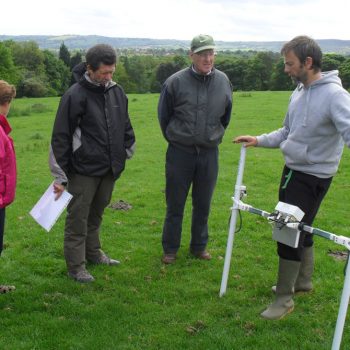All Categories
Featured
Table of Contents
What Are Geophysical Surveys & Why Do They Matter in Pickering Brook Australia 2021
Much of the image consists of blank areas now with little or no radar response. The "yard" wall is still revealing highly, however, and there are continuing recommendations of a difficult surface area in the SE corner. Time piece from 23 to 25ns. This last slice is now nearly all blank, however a few of the walls are still showing highly.
How deep are these slices? The software I have access to makes estimating the depth a little difficult. If, nevertheless, the leading 3 slices represent the ploughsoil, which is probably about 30cm think, I would guess that each piece has to do with 10cm and we are just coming down about 80cm in total.

Luckily for us, the majority of the sites we have an interest in lie simply below the plough zone, so it'll do! How does this compare to the other methods? Contrast of the Earth Resistance information (leading left), the magnetometry (bottom left), the 1517ns time piece (top right) and the 1921ns time slice (bottom left).
Geophysical Methods Commonly Employed For Geotechnical ... in Ballajura WA 2020
Magnetometry, as talked about above, is a passive method determining local variations in magnetism versus a localised absolutely no worth. Magnetic susceptibility survey is an active technique: it is a procedure of how magnetic a sample of sediment might be in the existence of an electromagnetic field. How much soil is tested depends upon the size of the test coil: it can be really little or it can be relatively large.
The sensing unit in this case is extremely little and samples a small sample of soil. The Bartington magnetic vulnerability meter with a large "field coil" in use at Verulamium throughout the course in 2013. Leading soil will be magnetically enhanced compared to subsoils simply due to natural oxidation and reduction.
By determining magnetic vulnerability at a reasonably coarse scale, we can detect areas of human occupation and middens. We do not have access to a reliable mag sus meter, but Jarrod Burks (who assisted teach at the course in 2013) has some excellent examples. One of which is the Wildcat website in Ohio.
Geophysical Survey: Plotting Buried Traces Of Human Activity in Maylands Western Australia 2022
These towns are typically laid out around a central open area or plaza, such as this reconstructed example at Sunwatch, Dayton, Ohio. The magnetic vulnerability survey assisted, however, specify the primary location of occupation and midden which surrounded the more open location.
Jarrod Burks' magnetic susceptibility study results from the Wildcat website, Ohio. Red is high, blue is low. The method is therefore of terrific usage in specifying locations of general occupation rather than determining particular functions.
Geophysical surveying is a used branch of geophysics, which uses seismic, gravitational, magnetic, electrical and electromagnetic physical methods at the Earth's surface to measure the physical properties of the subsurface - Geophysical Survey Services - Ohio Valley Archaeology in East Victoria Park Oz 2021. Geophysical surveying approaches usually measure these geophysical residential or commercial properties in addition to anomalies in order to examine various subsurface conditions such as the existence of groundwater, bedrock, minerals, oil and gas, geothermal resources, voids and cavities, and much more.
Latest Posts
Geophysical Survey In Archaeology in Neerabup Australia 2022
Geophysicists in Glen Forrest WA 2020
Geophysical Survey in Lockridge Oz 2023